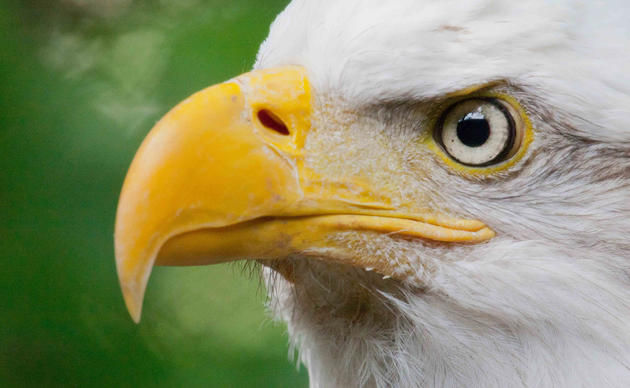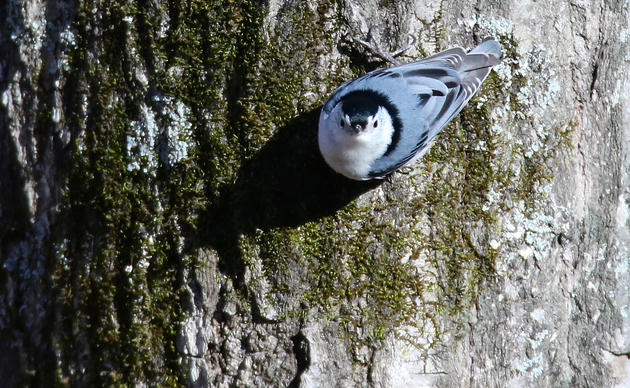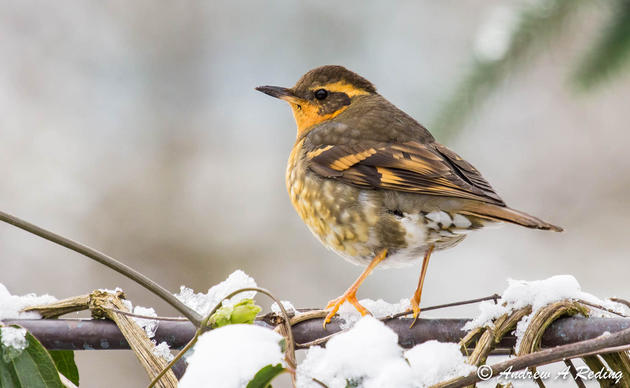As we look forward and begin planning for the next phase of Audubon Washington’s Coastal Program, we’re connecting with partners across the state to learn what they’re working on, where they need support, and how we can protect our coastal and marine bird species and their habitats together. This past week I had the exciting opportunity to join some of these partners for some field work! I had the chance to learn more about the Washington Department of Fish and Wildlife (WDFW) shorebird program in the field and got to participate in one of their long-term monitoring efforts – surveying the federally Threatened and State-endangered Western Snowy Plover (Anarhynchus nivosus).
Anyone frequenting Pacific Coast beaches has probably heard of the Western Snowy Plover. Over the last century, this shorebird has declined due to habitat loss, disturbance, and predation across its breeding range. They nest right on the sand in shallow scrapes (small depressions made by the birds scraping out some sand or loose soil) where their eggs blend perfectly into the beach and dune backdrop, protecting them from their natural predators. In an undisturbed setting, this strategy works very well, but today roughly 90 percent of their Pacific Coast breeding habitat has been lost to development and invasive plant species. In Washington this can be primarily attributed to the altered dune and beach environments after the introduction of non-native American and European beach grasses (Ammophila spp.).
Suitable nesting habitat is now hard to come by, and what remains is often shared with beachgoers, their vehicles, and pets. Off-leash dogs and trucks or ATVs can crush nests or flush incubating adults; scattered trash and food waste draw in scavengers like crows and ravens, which can then prey on eggs and chicks.
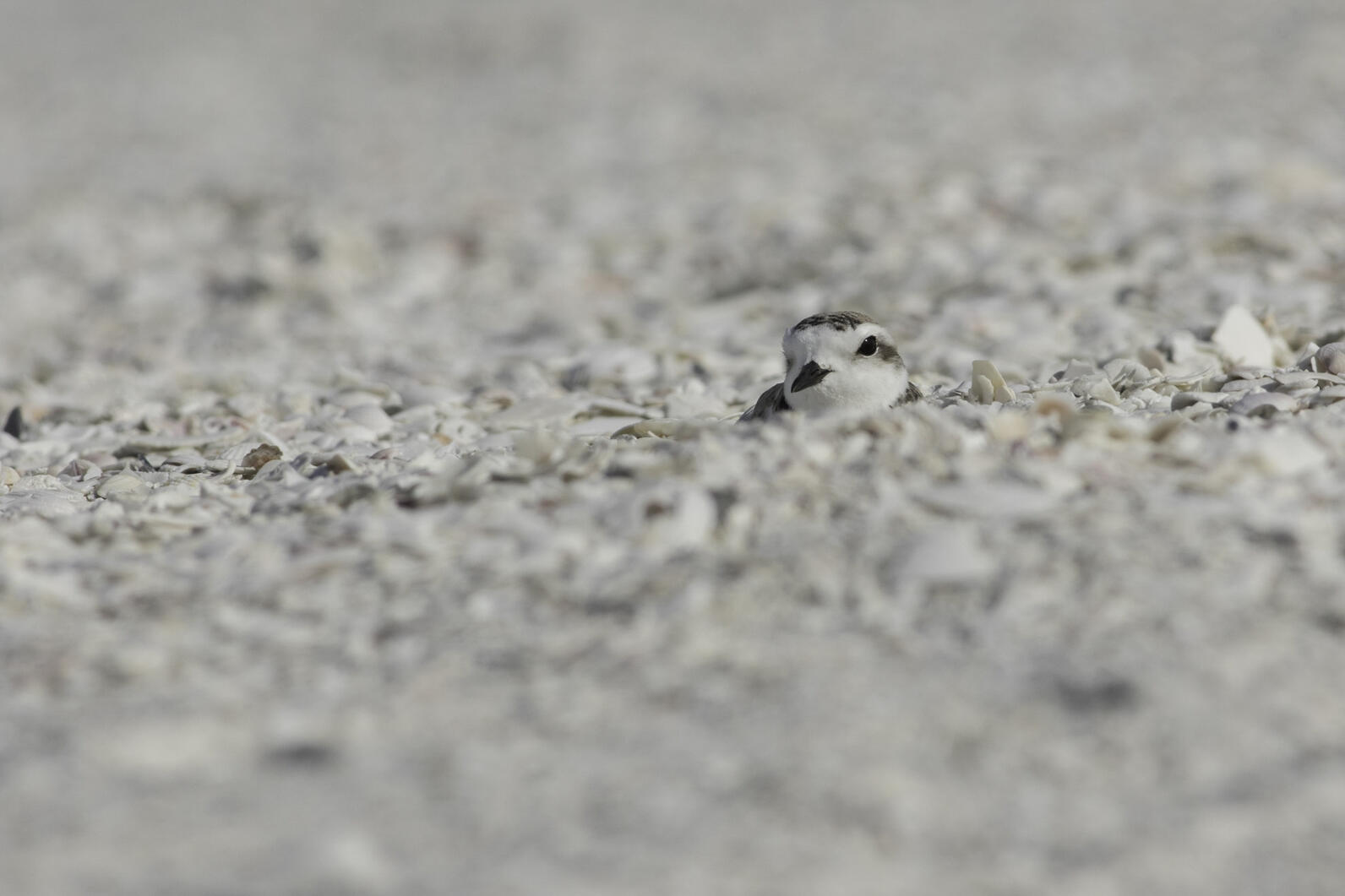
Despite knowing many of the challenges that Western Snowy Plover, biologists and managers are still facing some critical information gaps about this species, especially the Washington population. This is why WDFW and the U.S. Fish and Wildlife Service have collaborated for the last few decades to conduct monitoring surveys and research of the snowy plover population in Washington. Regular population surveys of some of the critical nesting habitats along Washington’s coast are the priority, with additional monitoring and research conducted when possible.
So I joined Allison Anholt (WDFW Shorebird and Colonial Waterbird Lead Biologist), Marissa Cent (WDFW Assistant District Wildlife Biologist), and several other members of the WDFW and Ecostudies Institute teams for the Western Snowy Plover population survey at Leadbetter Point National Wildlife Refuge. Our group of nine met bright and early in Oysterville to review logistics, test radios, and plan the day (after a round of introductions and an excellent ice breaker: “If money was no object, what sporting event would you buy tickets to?”). The earlier part of the survey was done from vehicles – driving carefully along the beach, mostly featuring unrestored habitat. Allison pointed out the sheer shelfs that the invasive beach grasses cause in these systems, making it impossible for the tiny nesting plovers to navigate far enough away during high tide events.
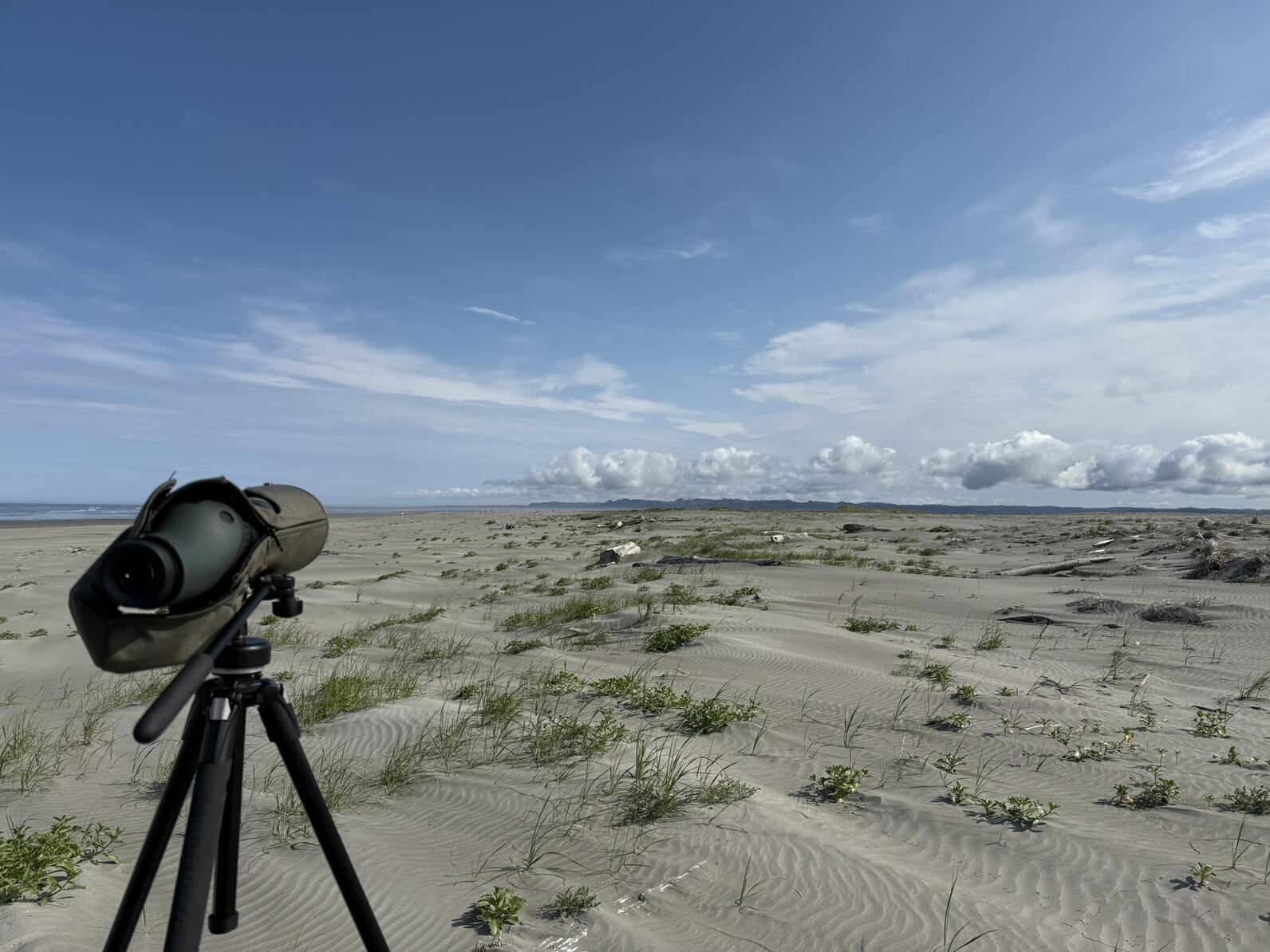
Not far down the beach we split into two teams. One two-person team headed into the Habitat Restoration Area, a large section of dune systems that have been undergoing years on invasive plant removal, returning them to valuable shorebird and Horned Lark (Eremophila alpestris) habitat. The rest of us spread out in a line across the width of the beach, spaced 25–50 meters apart, and we moved forward at a relatively slow pace, keeping our eyes peeled for plovers or potential plover threats. Observations were called out over the radio: “I’ve got two plovers just ahead, one male and one female. I am trying to get a good look at their legs for bands”. When something was spotted, everyone would stop and use the opportunity to either help get a band read or search for any other nearby plovers. Any new nest locations were documented, along with a quick status check on known nests. The conditions were about as perfect as they could be for seeing tiny plover tracks, which were an easy way to locate nesting activity. Though I don’t have the plover-searching skills of this team, I did manage to discover a fresh scrape—no eggs yet, but an exciting find and a nice confirmation of the plovers’ success in this region!
The survey continued all the way down to the tip of Leadbetter Point and included the expansive habitat at the tip of the point. The habitat down that far is unusual – sand as far as the eye can see, with areas of muddy wetland and other areas of dry, open area. Allison, who has been working with Western Snowy Plovers and other beach-nesting birds for most of her career, clearly knows their patterns and where they can be expected. She was able to point out which habitats support the most plovers and which they typically avoid. I got the download about the color banding schemes for these birds in Washington and we chatted at length about the information gaps about this species and other coastal species that WDFW is hoping to fill with additional surveying efforts.
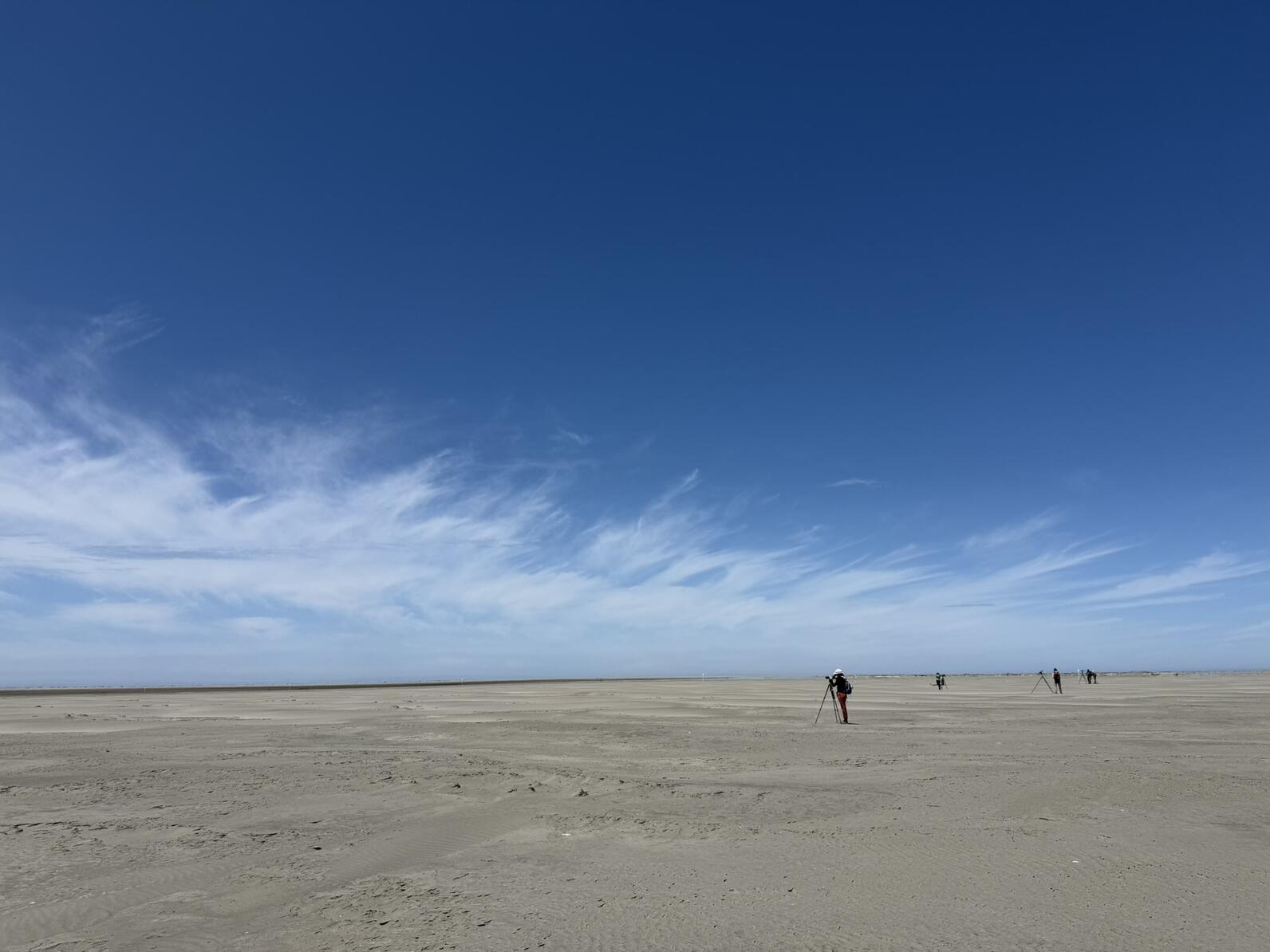
Allison also shared some great news for the Western Snowy Plover in this part of their range – they’re having one of the most successful years in recent memory! According to WDFW, as of Spring 2024, the 4-year average for Western Snowy Plover was between 35-41 breeding pairs, exceeding recovery goals. The 2025 breeding season is full of plovers: WDFW, USFWS, biologists from the Shoalwater Bay, Hoh, and Quileute tribes, and Ecostudies Institute counted 171 plovers during one survey: almost double their usual counts. The 2024 breeding season also estimated an average of 1.03 fledged chicks per male averaged across monitored sites, just barely above recovery goals. And this year seems to be even better so far! But gaps in the current monitoring efforts do not allow for full confidence in these metrics, so Allison is pushing for more to be done for this population.
Though the population of Western Snowy Plover in Washington estimated exceeded 100 individual adults for the first time in 2024 (an estimate of 123 breeding adults), challenges persist. According to WDFW a population viability analysis suggested that the West Coast population would not reach the federal recovery objective of 3,000 individuals without additional habitat restoration. Balancing the needs of Western Snowy Plover and the needs of Washingtonians looking to enjoy their beaches is a challenge, but it is a problem with some easy solutions!

WDFW suggests taking these steps to help keep plovers and other coastal wildlife safe:
- Respect closures: Do not walk into the dunes beyond posted closure signs.
- Dogs + Birds = Problems. Keep dogs close to you and away from nesting areas. Please consider keeping your dog on-leash during the nesting season, even if leashes are not required.
- Leave no trace. Pack out any food and trash. Food waste attracts plover predators like crows, ravens, and coyotes.
- Keep the skies clear. If possible, try not to fly a kite or drone above or around plover nesting areas. Plovers can mistake them for airborne carnivores, which causes them stress.
- If on a driving beach:
- Drive slowly: the beach speed limit is 25 mph. This speed protects plovers and migratory shorebirds.
- If possible, try to drive in the wet sand below the wrack line.
- Do not drive in the wrack line between June and August: tiny plover chicks hide in the seaweed.
If you want to learn more about responsible and bird-friendly recreation this summer, check out Audubon’s #ShareTheShore campaign. We have tools and tricks for both enjoying your outdoor time this summer and ensuring that our birds, plovers and their chicks included, can continue to thrive across our state!


